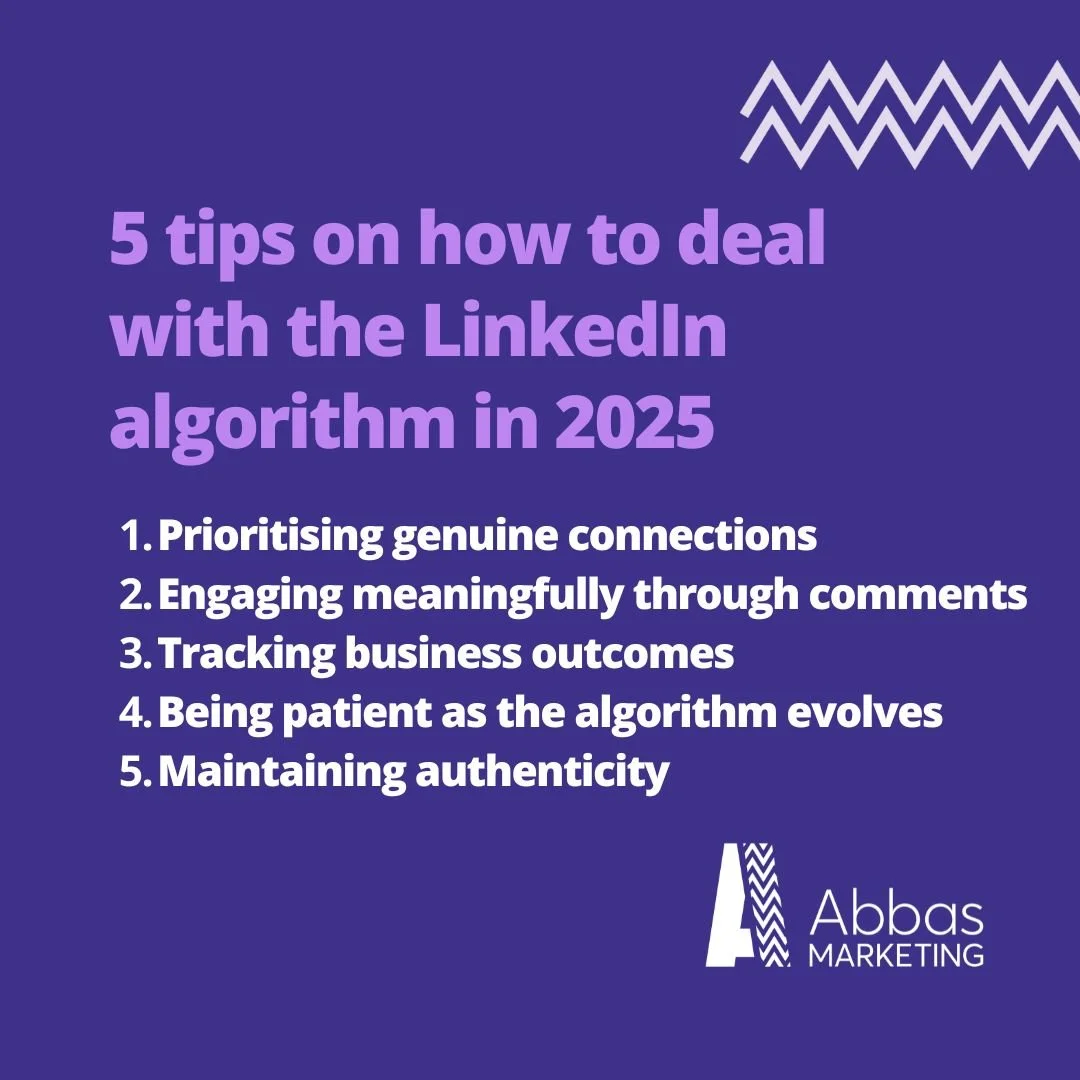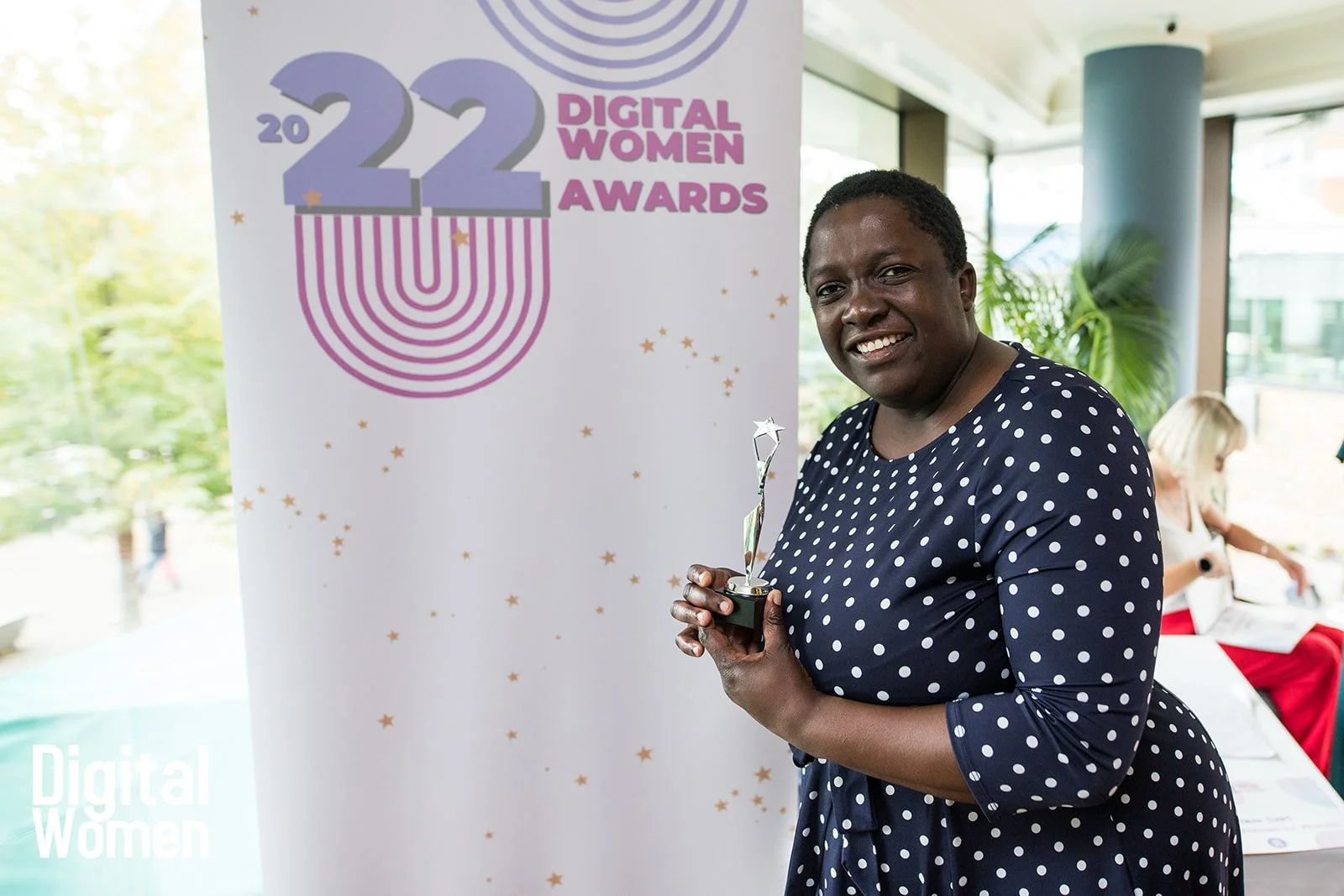Is your LinkedIn strategy working in 2025?
I did a post a couple of weeks ago about the fact that a comment I made on a LinkedIn post that subsequently went viral had way more impressions than all the post impressions, I’d had all week. And it seemed to strike a chord.
Your well-crafted post from your personal profile probably isn’t garnering the impressions it once was, and your company posts are even worse. Believe, I know the stats for company pages as I look at them for clients as part of audits.
Meanwhile, a single line comment you posted on someone else's content. That gets 7,000 impressions. Then 11,500. Then 15,000. After a few days and then ends up at 26,000 impressions.
So yes, let’s be honest, LinkedIn at the moment just ‘ain't mathing’!
And as much as it pains me to say that, I’ve been on the platform for 17 years, it is true and it may well be time to rethink how we’re all approaching the platform.
What’s up with the LinkedIn algorithm?
Honestly, no one really knows as it’s a well-guarded secret, plus it’s said LinkedIn isn’t just one algorithm but many. But we have to acknowledge that, like every social media platform, the algorithm is ever evolving. They always are, and things do tend to go a bit weird whenever new features tested being introduced. But right now, LinkedIn in October 2025 feels particularly unpredictable and unsteady.
And from the response to my LinkedIn post, clearly, I’m not alone in this observation.
What are other marketers experiencing on LinkedIn?
When I shared my frustration about the platform's current state, the response was significant. It turns out many marketers are questioning what's happening with content performance too
The comments on my post showed some interesting patterns across the platform:
Anna O'Riordan captured the current mood: "It's become a random space - but there's still some value to be gained by being here (just shouldn't be any business' only focus!)."
The unpredictability is real, but completely abandoning the platform isn't necessarily the solution.
Alex McCann identified a concerning pattern about the boom and bust nature of the platform: "The weird thing I find however is after a 'viral' post it's a guarantee the next post will totally flop."
Is there a shift from LinkedIn posting to commenting?
Personal brand expert Ella Orr shared her thoughts on a shift in behaviour: "In the 8 years I've been active on LinkedIn, it seems like we've moved from the mindset of post daily (if you've got the motivation for this!) to focus on the quality of your comments rather than focusing on posting."
Is this a fundamental shift in strategy from LinkedIn? Have we moved from "content is king" to "engagement is everything" but one thing for sure the implications for our marketing approaches aren't all that clear.
Jonathan Lloyd has already adapted his approach: "I've come off posting regularly and simply prefer the comments with my network and new connections."
Does LinkedIn still translate to business outcomes?
This is where the conversation becomes more nuanced. Despite the frustrations, Karina Perdomo reminded us of the longer-term value of being on LinkedIn:
"Yes, but then, you get a random call at a random time from someone who's been quietly following you for a while, and they become a regular paying client and only then it all adds up."
This is the aspect we often overlook when focusing on immediate metrics. The real business value isn't always reflected in impressions and engagement rates.
Dave Charest took a measured view: "You've just got to connect - really connect - with the people that you can when you can."
So perhaps, we’ve all been doing social media wrong by focusing on broadcasting our message amplified by a favourable algorithm rather than focusing on making genuine connections.
So what's actually causing this disruption?
Phil Szomszor provided a useful breakdown of the contributing factors:
Algorithm changes are producing inconsistent results, with some users experiencing significant drops in reach. He suggests these issues will likely stabilise over time.
Broader platform culture shifts are occurring. Content and behaviours previously confined to other platforms are now appearing on LinkedIn.
AI-generated content has impacted content quality. The rise of tools like ChatGPT has led to an increase in generic, obviously automated posts.
Anita Phagura echoed this concern: "My frustration is the 'popular' posts that are very evidently generic AI content..."
Many of us are seeing posts with high engagement that are clearly AI-generated, which raises questions about what the algorithm is actually rewarding.
Are technical issues compounding the problem?
Beyond algorithmic changes, there are technical glitches. Dr Sophie Taysom and Ruth Taylor both reported seeing posts from 2-3 weeks ago suddenly appearing in their feeds. An event that seems to be amplified during holiday seasons which does also beg the question that if LinkedIn is favouring comments over posting there will be even less high quality content as people switch to a comment-led strategy.
Jo Shock posed an interesting question: "I sometimes wonder if the algorithm is actually an AI black box and the programmers no longer have control over it."
Given the current unpredictability, this observation doesn’t seem as farfetched as it probably should.
Rethinking LinkedIn success metrics
Phil Szomszor made a valuable point about measurement saying: "Have a look at the new metrics, like Saves, Sends and Profile views which are a better measure of success."
John Espirian expanded on this: "It's nice to see big impression numbers on a comment you've made on someone else's post, but then you also want to see that matched by some follow-up evidence of the comment having some impact. Did it lead to new connections and/or conversations? The long-term drip-drip effect is what really matters."
This reframing is so useful as high impression counts on comments are interesting data points, but they need to translate into meaningful real-world business outcomes.
How to manage business expectations about LinkedIn performance?
Lynda Thompson provided useful context: "I hate that you have to know how to 'play the game' but fully acknowledge that I'm not paying for this service, so my expectations don't get to be high!"
As a free platform (for most users), perhaps we need to recalibrate our expectations about consistent performance.
Melanie Johnson highlighted an interesting irony: "The comments seem to be getting more traction than actual posts. Which of course supports the social ethos of actually being social - not just posting."
LinkedIn may be attempting to encourage more genuine social interaction rather than broadcasting.
Current strategies and boundaries
Rene Power articulated what many are experiencing: "I'm finding more in building relationships in the DMs. The posting just isn't reaching the heights, and I refuse to go to gutter level content or tag everyone I know."
What LinkedIn strategy makes sense now?
LinkedIn is unpredictable at the moment, but it remains where many of our target audiences are active. Rather than abandoning the platform, consider:
Prioritising genuine connections over vanity metrics
Engaging meaningfully through comments (current evidence suggests this performs better than standalone posts)
Tracking business outcomes - leads, conversations, meetings, new client relationships.
Being patient as the algorithm evolves and hopefully stabilises
Maintaining authenticity rather than attempting to game the system
Diversifying platforms - LinkedIn shouldn't be your only marketing channel – it should be about taking an integrated approach.
Now it’s your turn
How are you finding LinkedIn's current performance? Are you experiencing similar inconsistencies with your content? And what are you looking to do in response?
I'm interested to hear what's working for marketers right now, because we could all benefit from sharing effective approaches.
Thanks for reading
Need support with your LinkedIn strategy for your built environment business? Get in touch to explore how we can work on this together.ayo@abbasmarketing.com






